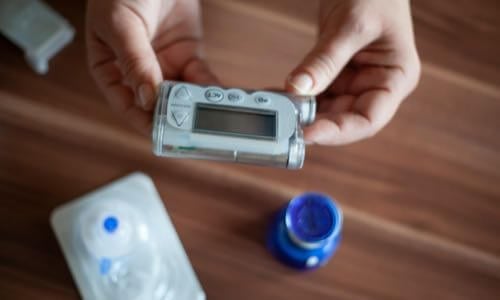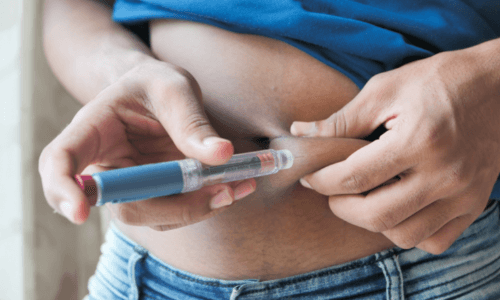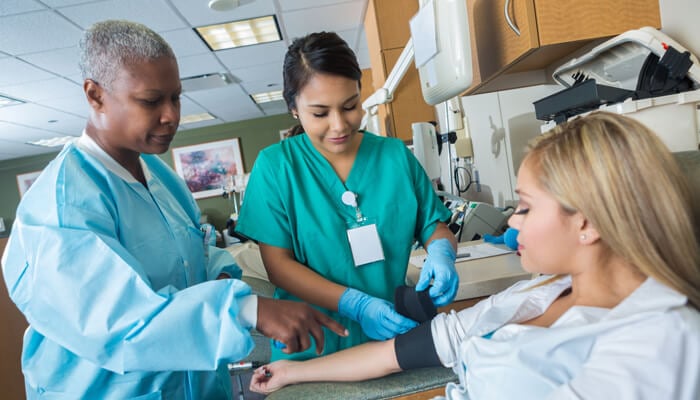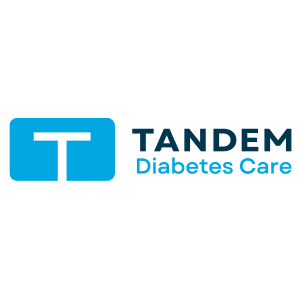Why to Screen. How to Screen.
What do Do About It.
It is now widely accepted that autoantibody screening identifies individuals who will develop Type 1 diabetes (T1D) before any symptoms appear or the disease is diagnosed. This is because nearly everyone with two or more diabetes-related autoantibodies will be diagnosed with T1D.
T1D is considered to be an autoimmune disease that progresses in three stages:
- Stage 1 is marked by the presence of two or more T1D-related autoantibodies.
- Stage 2 includes two or more T1D autoantibodies and dysglycemia.
- Stage 3 is when diagnosis occurs (classic symptoms).
Until recently, autoantibody screening to identify individuals at risk has largely occurred in the context of research studies, including clinical trials. Successful results from an NIH-funded T1D TrialNet study have demonstrated that progression to clinical diagnosis can be delayed in those at risk. There are additional studies in progress testing other therapies.
In response to evidence that therapy could alter the course of the disease, the ADA Standards of Care in Diabetes were updated to recommend antibody screening for relatives of individuals with T1D as part of research studies or clinical care.
Who Is at Risk for T1D?
T1D risk is modulated by age, family history, and genetics. The prevalence of the disease in the general population is approximately 1 in 300. The risk in individuals with a family member who has T1D is 1 in 20, showing that the relative risk for developing T1D is 15 times greater in family members than the risk in the general population.
Benefits of Autoantibody Testing in Family Members
There are benefits for family members to undergo testing for diabetes
autoantibodies. The vast majority (95%) of relatives of individuals with T1D
are autoantibody negative at screening, and thus unlikely to develop T1D. This
can be psychologically reassuring. And for some, identifying their risk while
they are still asymptomatic gives individuals and families time to adjust to
the possibility of progressing to clinical disease.
Screening followed by regular monitoring for disease progression among
autoantibody-positive individuals also markedly reduces
diabetes-related ketoacidosis (DKA) at clinical presentation from at
least >25% with usual care to around 4% with screening and monitoring.
Evidence supports screening for antibodies combined with monitoring for
progression to clinical disease as an effective intervention to reduce the
incidence of DKA. Screening for antibodies without monitoring,
however, has not shown this same clinical benefit. It is important to note that
autoantibodies are present long before any glucose increases and
symptoms, so glucose testing in relatives without autoantibodies is not
effective.
Finally, for individuals at the early stages of T1D (those with multiple
autoantibodies), there may be options for therapy aiming to delay progression
to clinical disease. Some at-risk individuals may be eligible to receive
treatment through clinical care. Other options include enrollment in clinical
trials testing new approaches.
Considerations Before Testing Family Members for Risk
Although most relatives tested will not have autoantibodies and so will be
reassured, others may be worried about testing — and if found to be
autoantibody positive, they may be anxious and upset. In the context of
research programs where individuals have access to experts to discuss their
results and can receive ongoing monitoring at no cost to them, these initial
negative psychological impacts decrease over time.
Autoantibody testing is the first step in determining someone's risk of
developing T1D. Naturally, those who test positive will have many questions
about the results and seek guidance for next steps. Diabetes Care and Education Specialists (DCESs) and other health care professionals (HCPs) involved in diabetes care and education have an important role in
providing guidance, support, and/or referral.
Information about Autoantibodies
T1D autoantibodies are markers that the immune system is attacking
insulin-producing beta cells. As mentioned in previous sections, the five
diabetes-related autoantibodies are insulin autoantibodies (IAA), antibodies to
glutamic acid decarboxylase (GAD), antibodies to the zinc transporter (ZNT8),
antibodies to the tyrosine phosphatase-related islet antigen 2 (IA2), and islet
cell antibodies (ICA).
In recent years, other assays and techniques have been developed to simplify
testing. For example, TrialNet provides a kit for home testing by capillary
sampling as an alternative to phlebotomy (blood testing).
Many CLIA-certified standard laboratories measure diabetes autoantibodies
that can be ordered as part of clinical care. Costs for this testing vary, so
the clinical team will need to verify insurance coverage if testing is done in
the clinic. However, research studies perform autoantibody testing without
charge.
An important point is that assay results between different laboratories can
frequently vary from one to another. It is challenging to interpret a single
positive autoantibody test using other technologies. For that reason, a single
positive test must be confirmed on a separate blood draw.
Emerging data suggests that among CLIA-certified tests, two or more autoantibodies
confirmed to be positive on two occasions do predict later disease.
Interpretation of Autoantibody Results
About 5% of relatives and 0.3% without a relative who has T1D screened for diabetes-associated autoantibodies will test positive for at least one; half of these will have two or more autoantibodies.
- The presence of a single antibody confirmed on two occasions in relatives confers an approximate 20% five-year risk for development of multiple antibodies.
- The presence of two or more different autoantibodies on two occasions confers a very high probability of progressing to clinical disease.
For example, a research study in babies with multiple autoantibodies found that 85% progressed to T1D within 15 years. Similarly, TrialNet research has shown that relatives with multiple autoantibodies and abnormal glucose (stage 2 T1D) have at least a 70% risk over five years. Those with normal glucose (stage 1 T1D) over the same period have a 35% risk.
To put this risk in perspective, there is a 2% to 3% risk of developing stroke or myocardial infarction (MI) within five years for individuals living with untreated hypertension. Yet in clinical practice, we routinely screen for hypertension to start treatment in the earliest stages.
Important point: While the presence of multiple antibodies confers high probability of disease progression, it does not indicate when this will occur. The timing of progression can vary from months to many years — with younger age associated with more rapid progression.

Monitoring for Disease Progression & Therapeutic Options
For individuals confirmed to have a single antibody on two separate blood tests, a DCES or other HCP should communicate the results and provide education on T1D
symptoms as a precaution. Consider annual autoantibody testing to check for
progression to multiple autoantibodies. Additional testing, such as A1C, is not
usually warranted unless another autoantibody develops.
For someone who is confirmed to have multiple autoantibodies on two separate blood tests, a DCES or other HCP should communicate the results and provide education on the
signs and symptoms of T1D. Referral for psychological and clinical support
is recommended at this stage.
Because most who are positive for multiple autoantibodies will eventually
develop T1D, monitoring is focused on early changes in glucose tolerance as
individuals progress to disease. Individuals who have multiple autoantibodies
should undergo initial metabolic testing such as an oral glucose tolerance test
(OGTT) to determine whether they have dysglycemia to determine the stage of the
disease.
Those with normal glucose (stage 1 T1D) on an OGTT should have ongoing
metabolic monitoring at least every 12 months, and those with dysglycemia
(stage 2 T1D) as frequently as every 6 months.
While the OGTT is the gold standard test, other options include a two-hour
post-prandial glucose value, or A1C. It is important to note the A1C will not
be abnormal until hyperglycemia is present. An A1C test is done for monitoring
multiple autoantibody individuals by looking for changes over time, even while
they remain below the diagnostic criteria of 6.5%.
While not a widespread practice, continuous glucose monitoring has been used
with individuals in stage 1 or stage 2 of disease in the context of
research.
Depending on age and metabolic status, autoantibody-positive individuals may
be eligible for therapy to delay disease progression within clinical care or
through clinical trials. It is strongly recommended for individuals with
multiple autoantibodies to develop personalized plans for approaches to
monitoring and therapy together with experts.
Key Takeaways
All those with T1D should be informed that their family members have a risk of disease and can be screened through testing for diabetes autoantibodies.
1. When asked whether someone should be screened for Type 1 diabetes risk,
- Explain that an individual’s risk for developing T1D is greater for those with a relative with the disease compared to those without a relative.
- Discuss benefits of testing, including possibilities of therapy or clinical trials to reduce the risk for or delay the development of T1D.
- Explain that antibody testing is available through clinical laboratories and free of charge through research groups such as TrialNet.
2. Explain the three potential benefits of autoantibody screening:
- The 5% of relatives who test positive may appreciate the foresight to adjust to the possibility of progression.
- Autoantibody-positive individuals who participate in ongoing monitoring have a reduced risk of DKA at diagnosis.
- Prevention therapies may be available in research trials or clinical care settings.
3. When an antibody test is positive,
- Individuals without T1D symptoms should undergo repeat testing to confirm the positive results.
- Communicate the results and refer them to health care specialists as needed.
- Explain the signs and symptoms of diabetes.
4. For individuals confirmed positive for multiple autoantibodies,
- Individuals should be informed that multiple T1D autoantibodies confer a high probability of progressing to clinical disease.
- Develop a plan for metabolic monitoring to determine risk (staging) and disease progression.
- Provide resources for emotional support as appropriate.
- Discuss the possibility of clinically available therapies and trials for at-risk individuals that may impact progression of disease.
5. It is important to offer autoantibody screening with a plan in place for follow-up or referral, including:
- Education regarding signs and symptoms of clinical disease and a care plan if progression occurs
- Psychological and clinical support
- Ongoing metabolic monitoring for disease progression


 Guidance on clinical assessment, adjustments, report interpretation and key education. Designed to be used during clinic visits.
Guidance on clinical assessment, adjustments, report interpretation and key education. Designed to be used during clinic visits.-(3).jpg?sfvrsn=16486d59_5)













-(1).png?sfvrsn=799e9a59_1)




















